In this article, I’d like to share insights into some of the recurrent patterns, symbols, and themes which characterize my art style over the years.
Broadly, these fall into two categories: planned, and emergent.
Premeditated Imagery: Birds, Boys, Pop Culture, and Aliens
The Birds:
A concrete example of the planned types of symbols would be the inclusion of parrots and budgies into many of my paintings; so common they set the theme for an entire body of portraits in “The Jataka Tales of a Budgie-Sattva”.
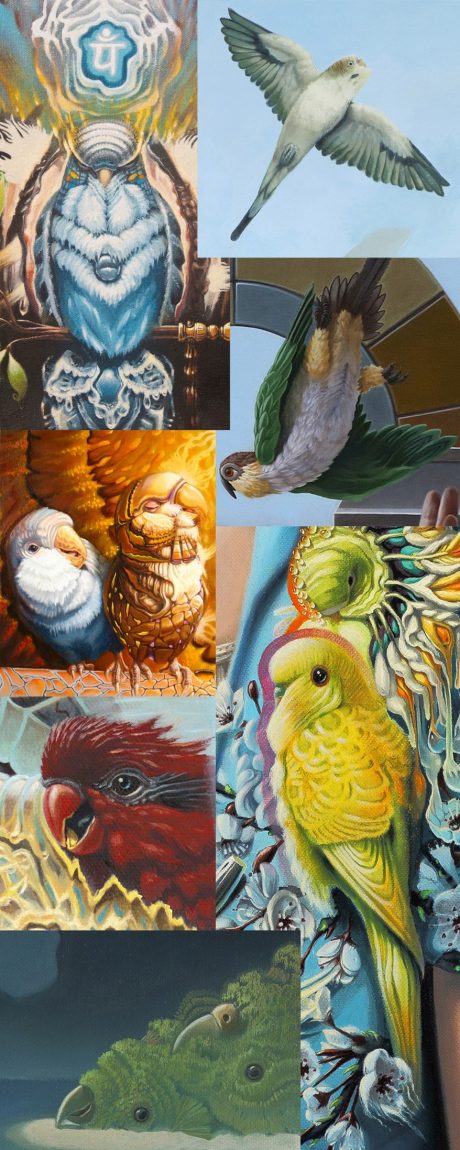
The Boys:
Another deliberate symbol, often serving as a kind of placeholder for self-identity, are the many figurative young men comprising the portraits of the oeuvre. These figures feature throughout all of my bodies of work, whether academic, paired with parrots in the “Jataka Tales of a Budgie-Sattva” series, or as part of a standalone psychedelic exploration.

Pop Culture and Aliens:
Beyond the “Self”, the “Other” is also symbolized throughout the work, typically as pop culture references, contemporary or nostalgic, or as manifestations of the “Alien”, usually rendered in the popular Grey Alien form.
The latter tend to arrive as a queer feeling, in moments where the psychological context of the painting turns threatening, eerie, or paranoid. I’ve had experiences related to witnessing UFO’s, missing time, dream paralysis, screen memories, and “encounters” throughout my life; and inevitably as I begin to investigate the psychological depths of a work, the presence of these entities reveal themselves.
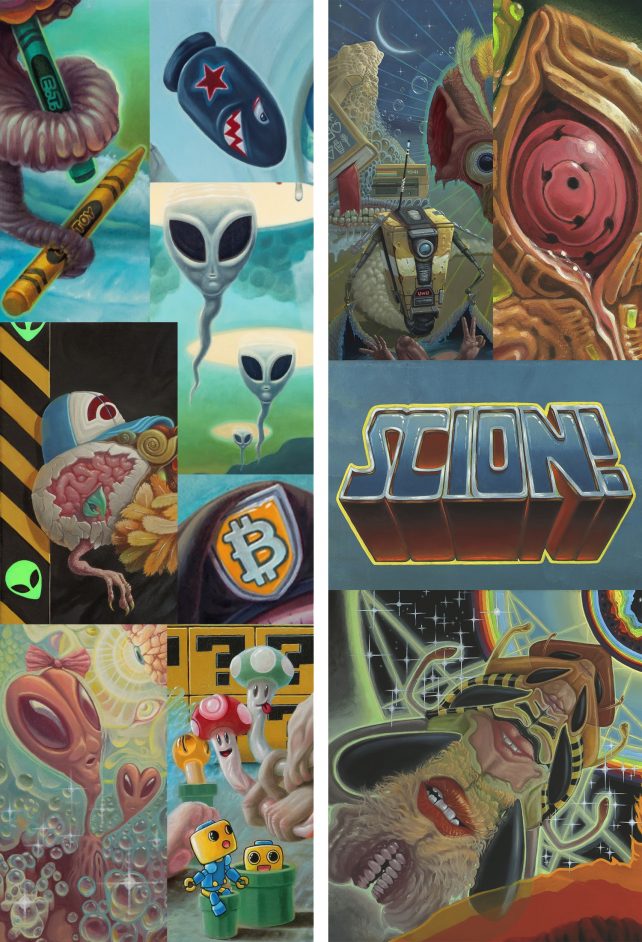
Whereas pop cultural references appear to insert themselves into a composition within the context of each painting, it has become clear that the alien heads have their own agenda.
As we can see below, from the painting “Fuku-Shiva”, the alien symbols appears just behind the exposed eggshell skull of the colorful, psychologically rendered being. This suggests the aliens exist as interlopers within a deeply sub conscious state.
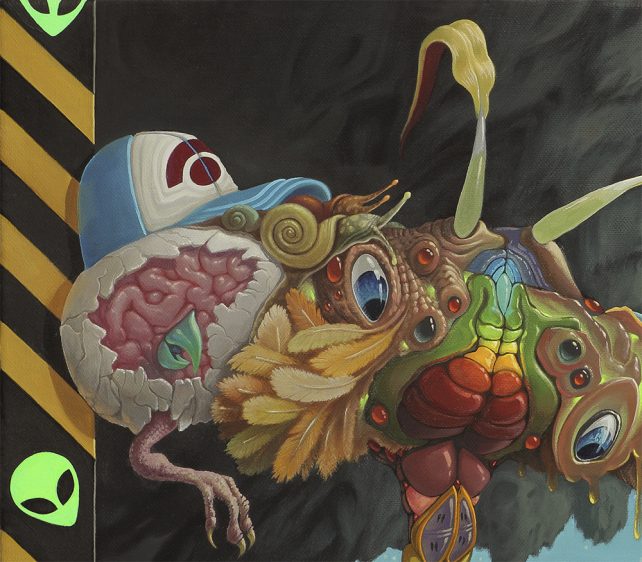
In “Fuku-Shiva”, the figure is psychologically rendered, but this relationship with the alien holds even when a figure is representational, such as in “The Scion of a Budgie-Sattva” portrait (below).
Here, the main figure has a light and shadow side. His attention emerges from the illumination, indicating the dark side is the character’s unconscious. The series of alien heads vector in along the shadow, unconscious side:
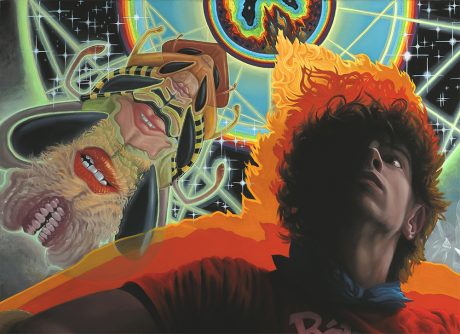
This tendency to show up “behind” the figure is exemplified in “Alex in Wonderland”, where the entities morph in response to the corporeal sexuality of the figure.
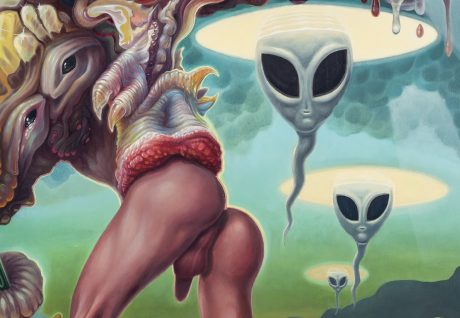
For only one special instance is the subject directly facing the alien, in the painting “Mr. Crazy Bones Encounters Ms. Alien Head“. In this case, a shaman in a state of non-ordinary awareness is able to see the alien, who denotes surprise:
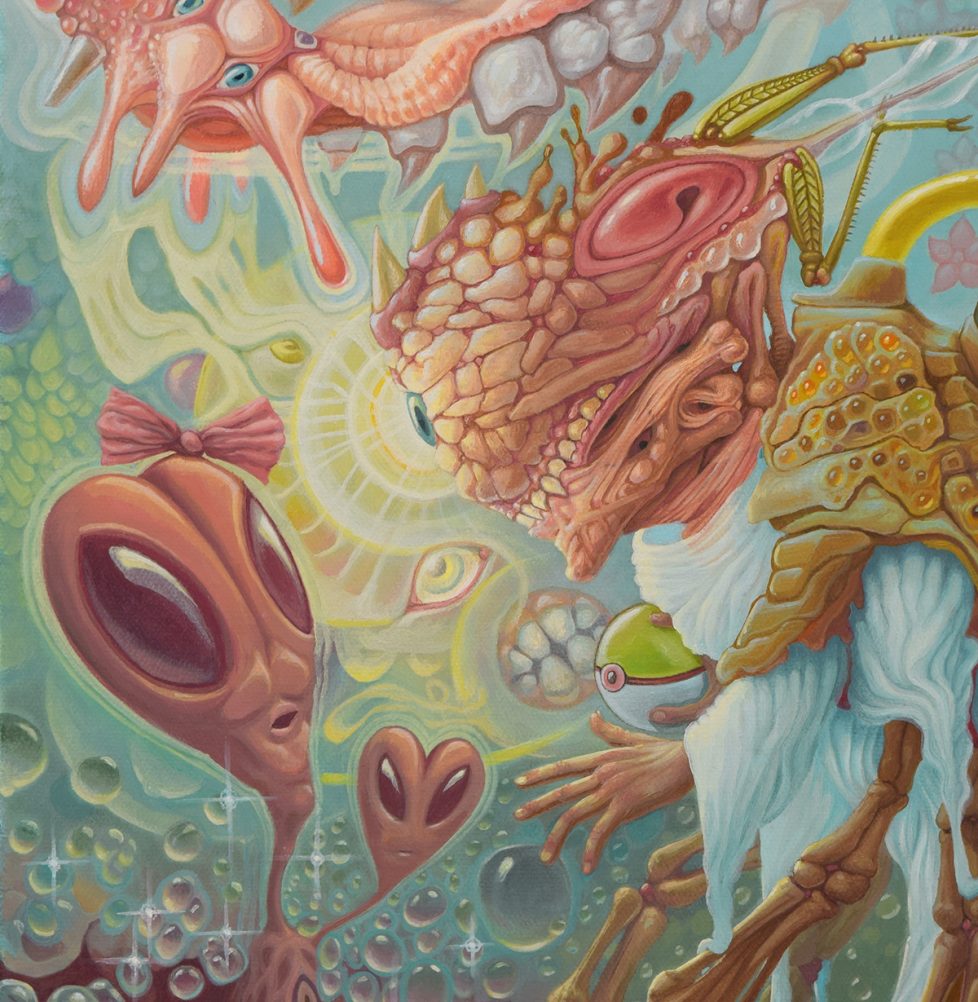
It is important to note that there is a spectrum of premeditation as it applies to the male figures, the budgies, pop culture symbols, and the aliens. From the outset of a portrait, the subject of budgies and male figures have been predetermined. As context emerges, pop culture symbols come into consideration. Similarly with the alien, as their presence is felt beyond a certain threshold, the decision then comes to render them.
Emergent and Non-Rational Forms, Tongues, and the Teary Eye
The Non-Rational Topologies:
The “psychedelic” manifestations of the work are wholly unplanned. In their purest form, as part of an ecstatic in-the-moment feedback loop between artist and media, a psychological topology emerges. This happens in such a way that the artist feels more like a channel than the director, perhaps after moving into a state of synchronization with one’s environment, where the more defined rational processes give way to a whole-being approach to the art. Organization resembles that of an ecology, often akin to the movements of slime molds, organic growths, or even pupation.
This results in forms such as the “Goblin” from “Alex in Wonderland”…
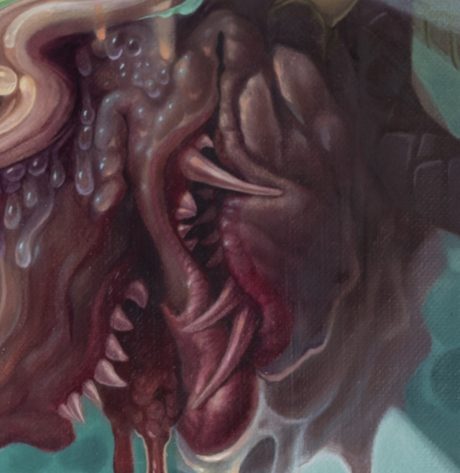
…or the body of the budgie in the painting “Budgie-Sativa”…
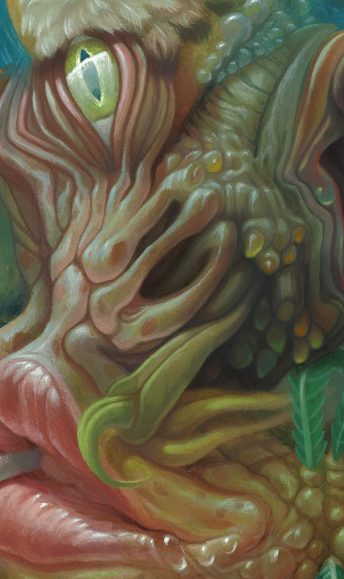
…or virtually the entire organism of the creature in “The Dreamer”:
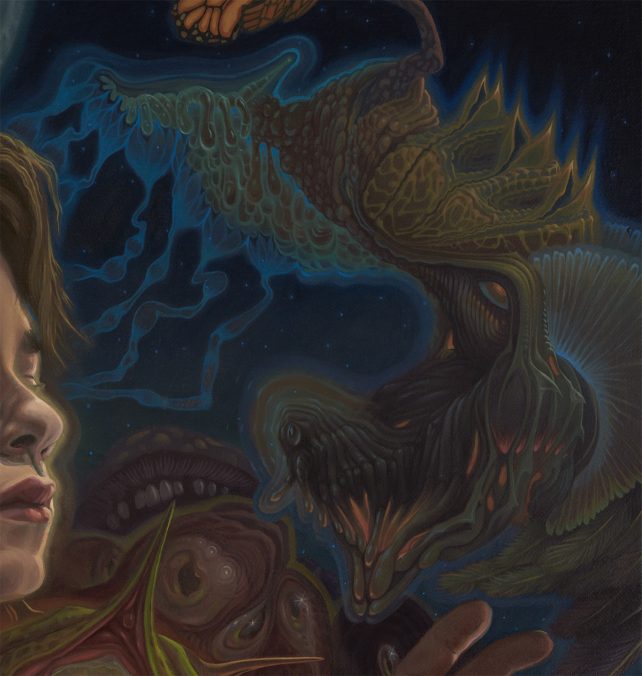
Occasionally a predetermined object is reskinned by a non-rational overlay, as we can see in the development of the archaic entity in “The Harvest”:
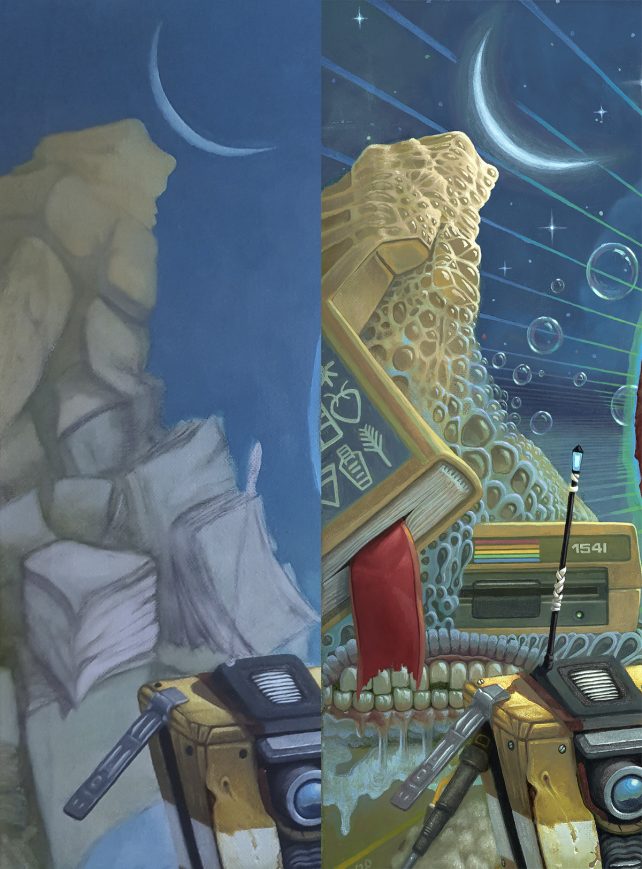
In the beginning the entity had features like stacks of papers, magazines, or books. Although those were resurfaced, a hardcover book form did actually emerge from non-rational process. I then later added a red bookmark ribbon and cuneiform.
The Tongue:
Although non-rational imagery often and unsurprisingly tends to be organic and abstract–resulting in textures, patterns, and fractals–occasionally a fully fleshed organ emerges. In my work the tongue is perhaps the most common to arrive. This has been true going back for decades, as seen in an older unfinished painting:
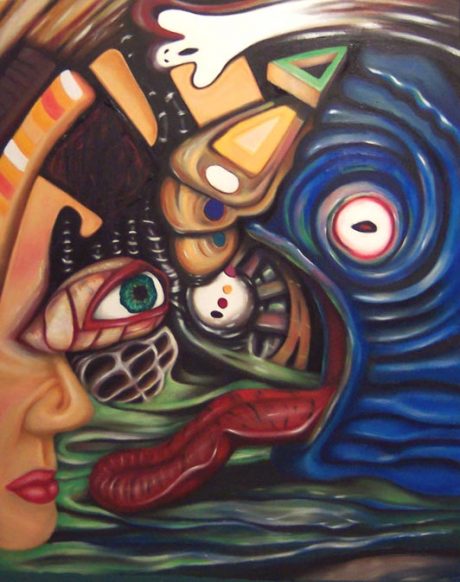
And again we see it in 2013, taken from the composition of “Auto-Erotic Sphinx with Toys”:
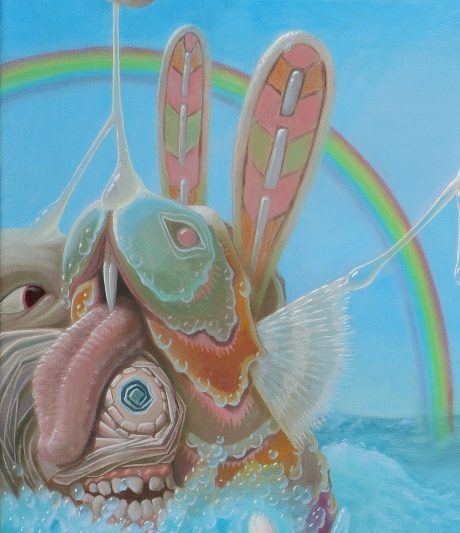
As it happens, another long-tongued bunny appeared in a later 2016 work, “The Lovers” (below), which has since become an animated NFT on SuperRare.
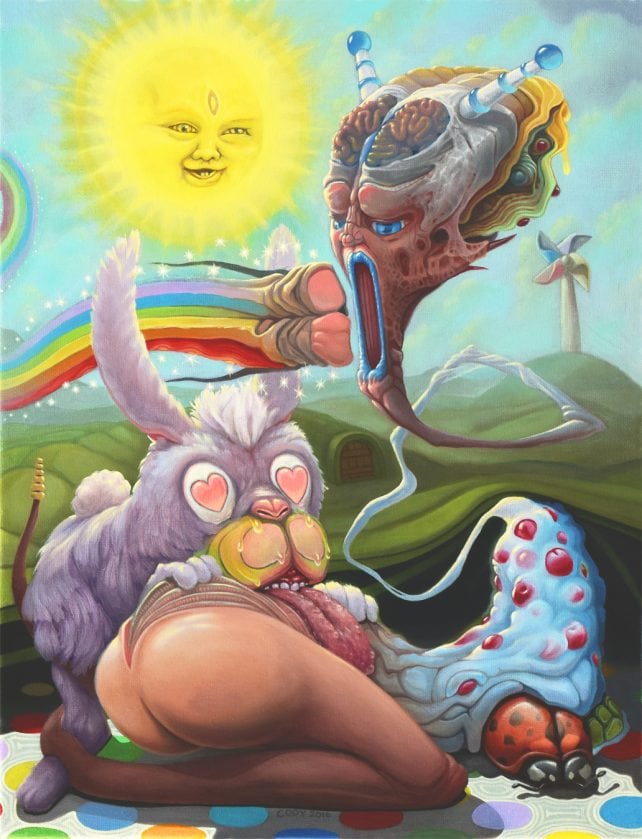
The sensual nature of the tongue is a familiar part of being human. It’s representation in the work therefore is likely related to the posit by Salvador Dali, when he asserted:
“Every being has within himself as it were a structural intuition of an image of his corporeality.”
A scientific representation of this internal self-image adds weight to the psychological significance of the sensual tongue, as seen in the “Cortical Homunculus”; a distorted representation of the body parts scaled by their sensory or motor significance to the brain.
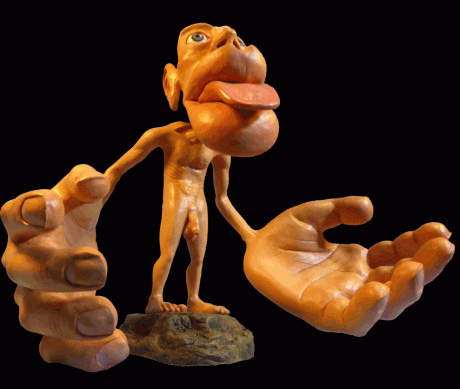
Meditations of pleasure and food go hand in hand, which may explain why later evocations of the tongue took on the form of what I classify now as “Catchers” within my art, the first and most famous being “The Moth Catcher” in 2015, and the most recent, “Naga: the Bee Catcher” from 2021:
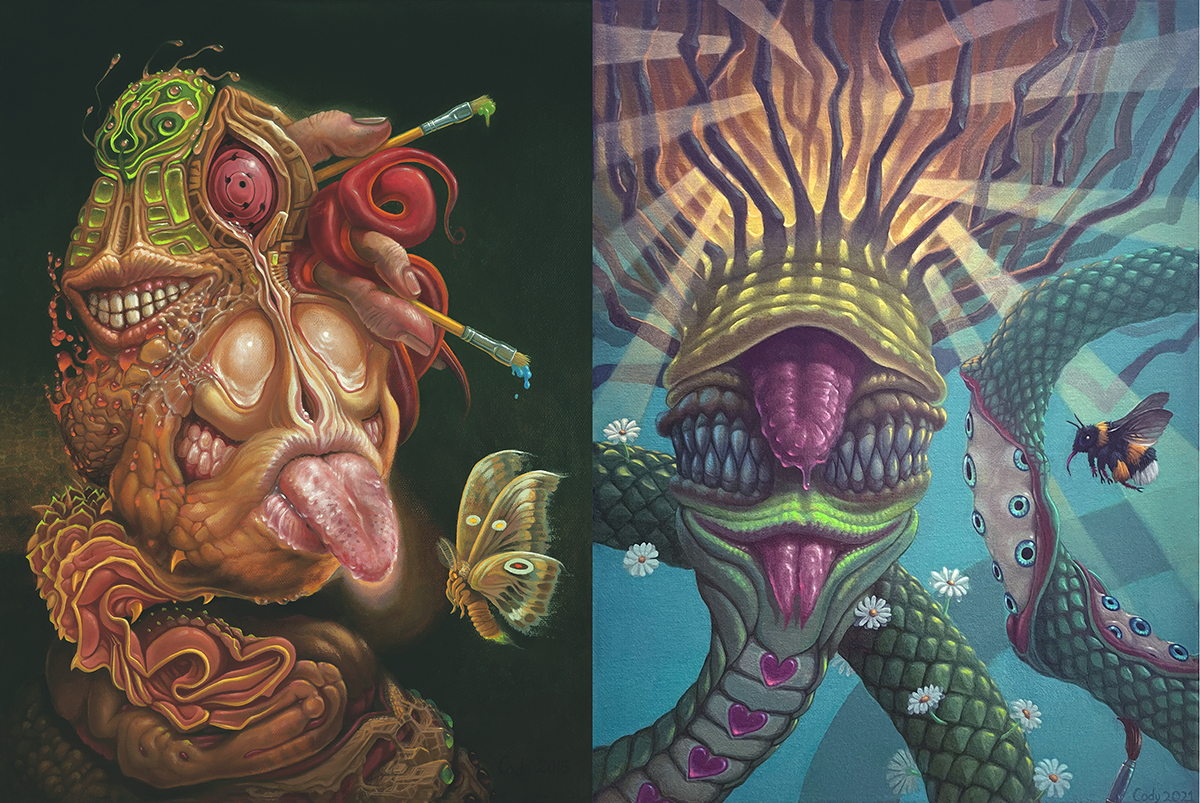
These creatures are passive, and lay in wait like carnivorous plants. The large tongue of the “Bee Catcher” morphed from what began as a red clown nose, spinning the painting into an entirely unforeseen direction and establishing the new species of “catchers” into the Cody Seekins art canon.
The Teary Eye:
Another pattern which began many years ago and syncopates my imagery is the “Teary Eye”.
One of the earliest emergent examples of this symbol can be witnessed in a drawing from 1999, “Deconstructed 21 Year Old Psychology”, where we see two eyes represented. The left eye is slanted, weighted down by a chain of tears culminating into a mass at the end. The right eye is clear and without tears.
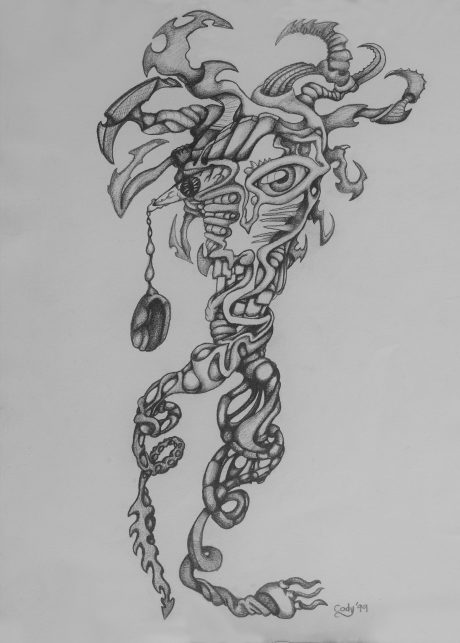
We see a later example from 2011 in “The Mad Sage” oil painting:
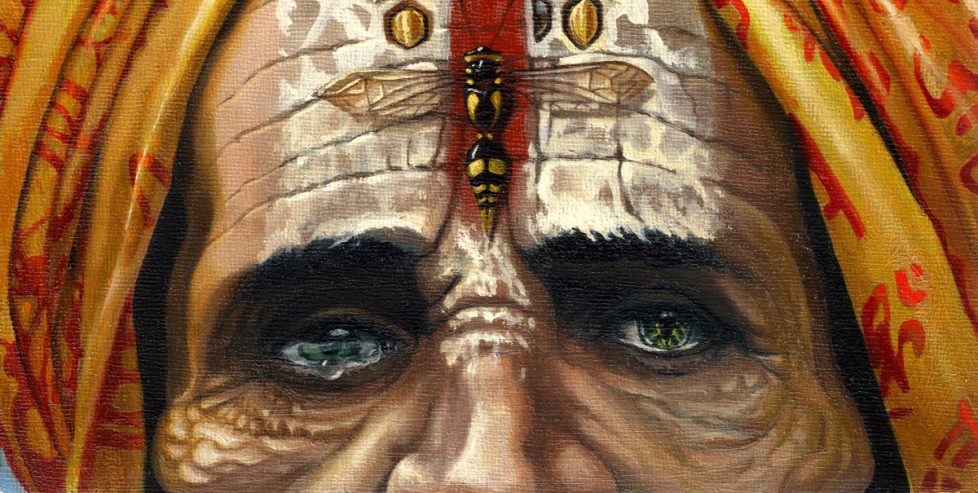
And again in 2018 in “Alex in Wonderland”:
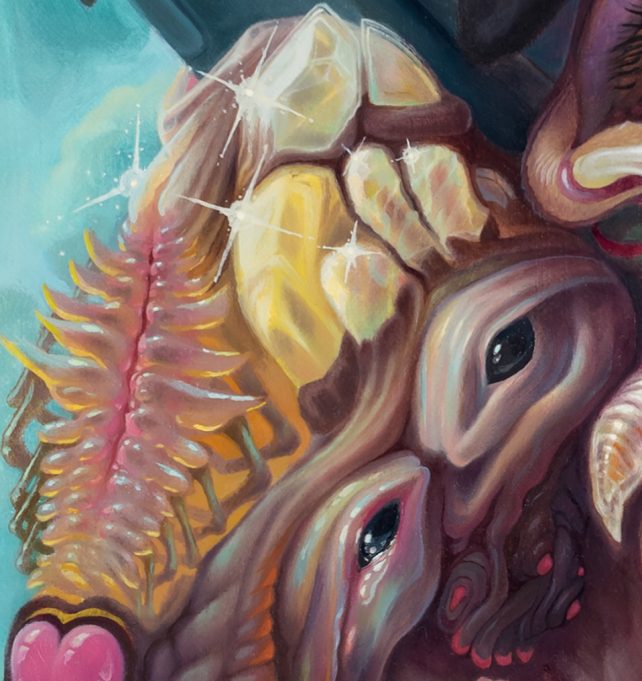
There is consistency in the pattern of one teary eye; and it always being the left eye. It’s easy to spot when the portrait is a standard bi-lateral structure. The “left-side” quality can still be inferred; however, in the vertical eyes featured in “The Caravan of My Inner Child” from 2013:
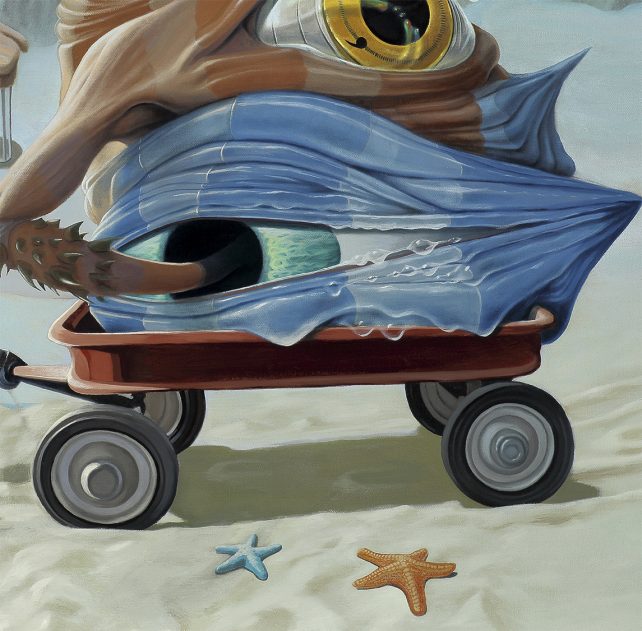
—
“If you look long enough into the void the void begins to look back through you.” –Friedrich Wilhelm Nietzsche
It is always fascinating when isomorphic recurrences come about in the work, and usually as a result of the paint medium seemingly slipping out of my control, leading inexorably to their summoning.
The more paranoid part of me begins to suspect that these muses, like puckish elves, play my hand as part of an elaborate occult invocation. For sure it seems there is something more to the emergences; rather than a superficial ephemera produced by the right conditions, it often feels as if they wait beneath the surface, deftly crafting circumstance from within the fuzzy Brownian Motion of matter–over time building the very instruments of their instantiation.
The ability to render an image skillfully is satisfying, and some of the exquisite examples by master artists are genuinely awe-inspiring, but the experience of throwing a line out into the deep abyss of the mind, and feel something else tug on it, is for me the most interesting part of the craft.
The mystery in that potential makes me incessantly curious to see what comes next.